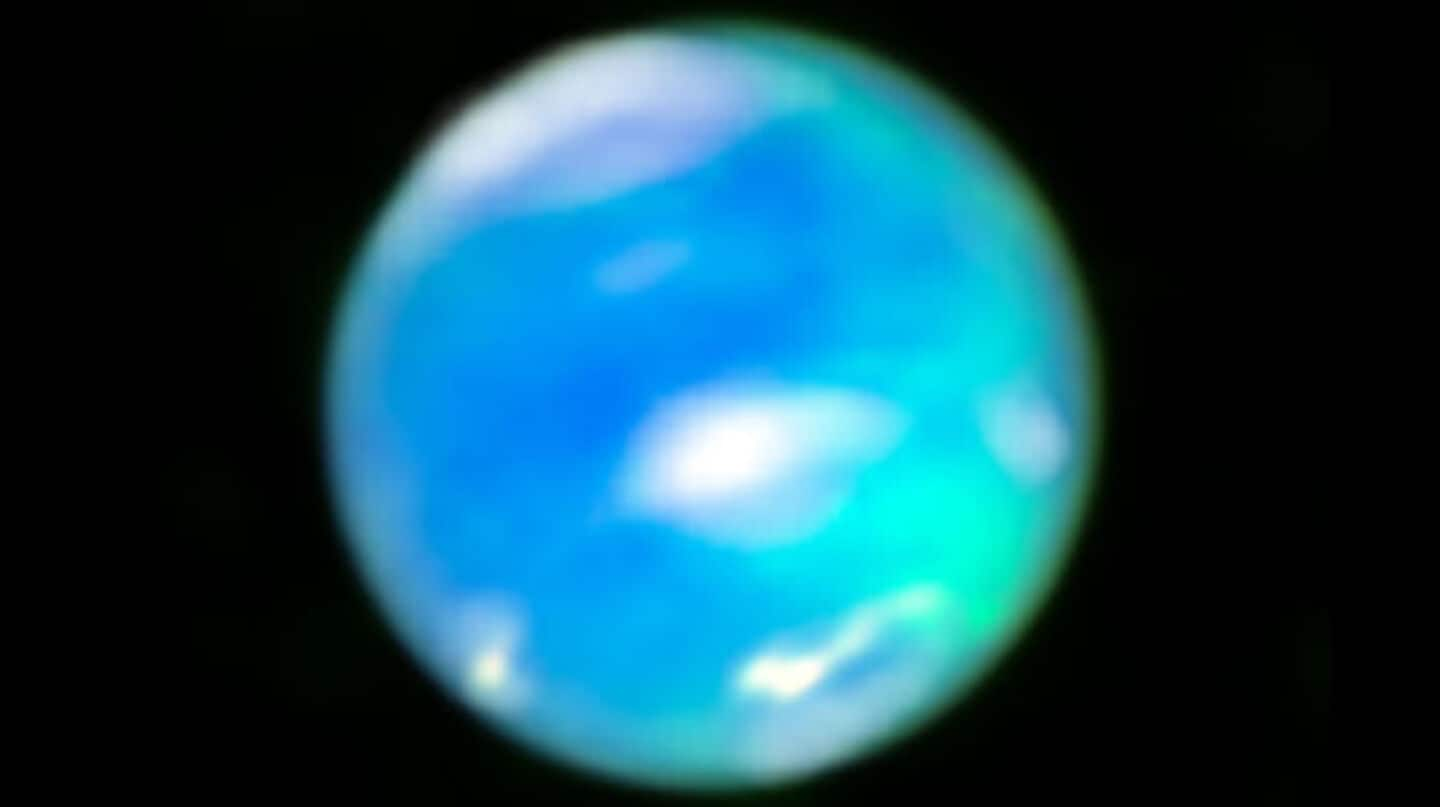
Neptune's auroras captured for first time—Know why they are elusive
What's the story
For the first time, scientists have observed auroras on Neptune, adding a new dimension to our understanding of the distant ice giant.
These luminous displays, akin to Earth's northern and southern lights, were detected through a combination of observations from the Hubble Space Telescope and the James Webb Space Telescope (JWST).
The discovery not only showcases Neptune's dynamic atmospheric phenomena but also presents new questions about the planet's magnetic field and atmospheric composition.
Formation
Neptune's auroras appear around its mid-latitudes
Auroras occur when charged particles interact with a planet's magnetic field, leading to energy emissions in the form of light.
However, unlike Earth, Jupiter, or Saturn, where auroras are concentrated near poles, Neptune's auroras predominantly appear around its mid-latitude regions.
This unusual positioning is attributed to the significant tilt and offset of Neptune's magnetic field relative to its rotational axis.
The planet's magnetic poles are not aligned with its rotational poles, causing auroral activity to manifest away from the poles.
Questions arise
Discovery raises intriguing questions about Neptune's magnetosphere
This discovery raises intriguing questions about Neptune's magnetosphere and its interactions with the solar wind.
The planet's magnetic field is strongly tilted at 47 degrees relative to its rotational axis and is offset by approximately 13,500 kilometers from its physical center.
Such a configuration suggests complex internal dynamics that differ from the magnetic field generation processes observed in other planets.
Understanding these mechanisms could provide deeper insights into the behavior of magnetic fields in planetary bodies.
Temperature drop
Webb's instruments also detected a temperature drop in atmospheric temperature
From the Webb observations, researchers also measured the "temperature of the top of Neptune's atmosphere for the first time since Voyager 2's flyby."
"I was astonished—Neptune's upper atmosphere has cooled by several hundreds of degrees," lead author Henrik Melin of Northumbria University said. "In fact, the temperature in 2023 was just over half of that in 1989."
This cold temperature is likely the reason that Neptune's auroras have remained undetected for so long.
Collaboration
Collaboration between Webb and Hubble: How Neptune's auroras were captured
The aurora image was taken by Webb's Near-Infrared Spectrograph, an instrument that studies light absorbed or emitted by celestial objects.
This was then merged with visible light images from Hubble's Wide Field Camera 3.
The combined capabilities of the two powerful telescopes have given us the first direct visual confirmation of aurora on Neptune.
JWST's instruments identified the presence of trihydrogen cations (H3+), molecules that are generated during auroral activity and serve as clear indicators of such phenomena.
Insights
Auroras provide insights into planetary magnetic fields
The detection of auroras across different solar system bodies, including Neptune, provides researchers with valuable data to map planetary magnetic fields and assess atmospheric composition.
This information can even hint at the presence of subsurface oceans.
For example, auroral ovals on Ganymede (Jupiter's largest moon) stay fixed no matter how much it wobbles, indicating an electrically conductive layer (likely a saltwater ocean) beneath its surface.